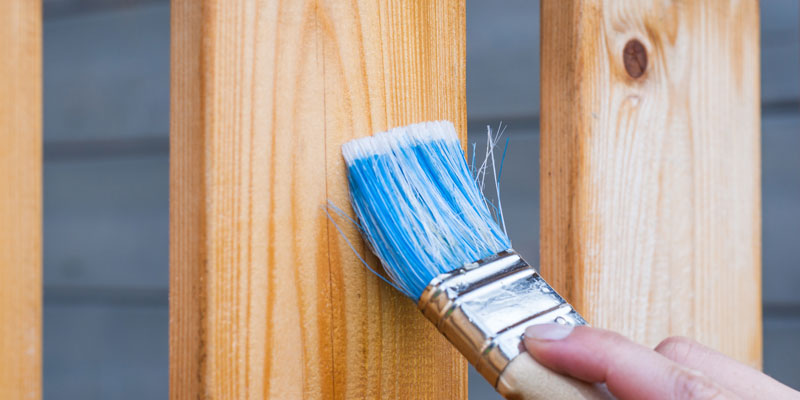Choose the Right Paint for Particular Surfaces
Deciding to paint or repaint metal, masonry, or wood surfaces can be a big project, but it doesn't have to be if you use the right paint for the job. Before getting started, always remember the most important part of any painting project is preparation. Without proper cleaning and priming, your paint job will lose the potential to look its best, or it will not last as long as you might hope. No matter the surface, always scrape or sand existing peeling paint or rust before priming and painting. Clean the surface with soap and water and leave to dry for 24-48 hours, depending on the surface. And it's always a good idea to prime before painting.

Metal
There are several options available in either paint-on or spray varieties to paint metal. You can also choose between water-based acrylic paint or oil-based paint, so long as the container specifically indicates the paint is for metal application. While oil based-paints were at one time more popular and considered better, acrylic direct-to-metal (DTM) finish paint is now superior in many instances.
Both types have their pros and cons. Acrylic DTM paint is generally considered easier to apply and clean up, though it may not be as durable against stains and weathering. The good news is that acrylic DTM finish paints have vastly improved over the last decade and is continuing to improve its technology. On the other hand, oil paints on metal have good adhesion and can achieve a smooth-looking finish. However, oil paint can be more labor intensive, takes longer to dry, and has stronger fumes. Additionally, oil-based paints are slowly being phased out as an option due to the environmental concerns they cause.
Masonry
Depending on what you want to do with your masonry surfaces, you have plenty of options. Elastomeric coatings are extremely thick and are designed to help to seal exterior surfaces against water, as well as to protect against the expanding and contracting that occurs during rapid temperature changes. Acrylic cement paint is specifically designed for masonry and is easy clean. It also often comes with anti-fungal and anti-mold additives for extra protection against moisture. Standard acrylic paint can also be used in most cases but will require more frequent maintenance and repainting.
Wood
Always prime unpainted wood surfaces. A primer protection against tannin bleeding will give you the best appearance and keep the paint colors you choose in the best shape. After that, either latex or oil-based paint work well on wood. If the surface is already painted, usually the best idea is to stick with whichever type of paint is already on the surface, because painting oil-based over latex can result in peeling paint and adhesion problems.
Now that you know what types of paint to use on different surfaces, you're ready to pursue your painting projects with confidence! If you'd still like more information or would like professional help for your project, always know that you can contact us for all of your painting needs.
About the author
Chase DeRousse is the Vice President of Painting at Major Painting and strives to deliver quality craftsmanship coupled with superior customer service, creating a unique and pleasant experience for all Major Painting customers, no matter the size of the project. Chase also holds an active Class A General Contracting License.
Chase has won multiple accolades recognizing his leadership and excellence in the painting industry including awards from the Painting Contractor Association (PCA), Business Owners and Managers Association (BOMA), and Institute of Real Estate Management (IREM).